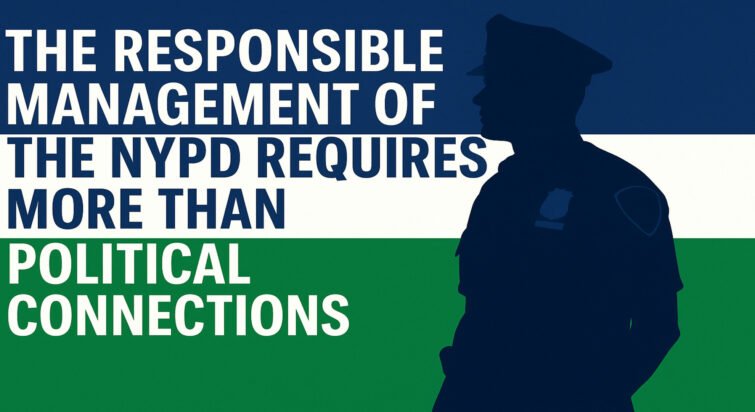The New York City Police Department has long stood at the crossroads of public safety, civil rights, and democratic accountability. Its roots stretch back to the Dutch colonial era (1625–1664), when hand-rattle patrols were used in New Amsterdam to deter crime.
Under British rule (1664–1783), constables maintained order, focusing on offenses such as gambling, prostitution, and disturbances in the church.
After American independence, New York adopted the London model of professional policing, culminating in the creation of a paid police force in 1828, the issuance of printed rules and regulations in 1845, and the adoption of full uniforms by 1853.
The Metropolitan Police Act established the broader Metropolitan Police District.
Throughout the 19th and 20th centuries—from the Civil War through the Great Depression, World War II, and the unrest of the 1960s—the NYPD underwent cycles of modernization, community engagement, and restructuring.
But the NYPD’s history is not a simple arc of progress.
It has been marked by periods of deep institutional failure—from the Tammany Hall scandals of the 19th century, to the Knapp Commission’s exposure of corruption in the 1970s, to the Mollen Commission’s findings in the 1990s detailing brutality, corruption, and systemic cover-ups, to the landmark decision in Floyd v. City of New York documenting racial profiling and unconstitutional policing.
Each chapter teaches the same fundamental lesson:
Policing cannot succeed through political loyalty, superficial “wins,” or exclusionary command structures.
It must be rooted in constitutional integrity, public trust, and leadership capable of confronting—not concealing—institutional failures.
This year, at a high-level NYPD meeting, Chief of Department John M. Chell reportedly urged Police Commissioner Jessica S. Tisch to ensure diversity in executive promotions, noting the stark lack of representation under her leadership. Tisch allegedly responded:
“Why? Don’t you want to win? We’re going back to the Kelly and Bratton days.”
Let us be very clear about what that statement represents:
The “Kelly and Bratton days” saw the rise of systemic racial profiling, stop-and-frisk abuses, and constitutional violations so grave that they triggered federal court intervention in Floyd v. City of New York. The NYPD remains under federal monitorship today at an enormous taxpayer expense due to that unconstitutional legacy.
Recent findings confirm the dangers of repeating that past:
The Floyd Monitor’s 23rd Report (2025) shows that only 75% of NYPD Neighborhood Safety Teams’ stops were lawful, with even lower compliance for frisks and searches.
95% of stops involved Black or Hispanic individuals, and supervisors approved 99% of stops as “lawful,” even when audits found constitutional violations.
Officers initiated self-initiated stops 70% of the time without reasonable suspicion.
Supervisory failure to correct racial profiling was rampant.
Separately, NYCLU (ACLU of New York) analysis of NYPD traffic stop data between 2022 and 2024 paints a devastating picture:
NYPD conducted over 2.2 million traffic stops during the period.
Black drivers accounted for 32% of stops despite being only 22% of the driving population.
Latinx drivers accounted for 30% of stops, despite making up only 23% of the driving population.
Black drivers were searched at a rate 10 times higher than white drivers; Latinx drivers 6 times higher.
Traffic stops, vehicle searches, arrests, and use-of-force incidents all increased by over 50% in 2024 alone.
These numbers aren’t isolated—they are systemic.
They reflect an enduring crisis of racial profiling, unconstitutional policing, and a total failure of internal oversight.
And it is happening under leadership that appears more focused on winning political points than protecting constitutional rights.
At the same time, officer morale—already suffering from years of political instability, staffing shortages, and leadership turmoil—continues to erode.
NYPD officers deserve leadership that values professionalism, constitutional integrity, and public service, not nostalgic regression to discredited models.
When political insiders prioritize patronage and short-term numbers over ethical governance, it demoralizes the rank-and-file, accelerates attrition, and compromises public safety.
In fact, after Commissioner Keechant L. Sewell—one of the most forward-looking, reform-minded commissioners in recent memory—was forced out by City Hall machinations, NYPD officers themselves warned that morale would worsen without serious leadership reform.
Meanwhile, troubling allegations against top officials, such as former Chief of Department Jeffrey B. Maddrey and former Commissioner Edward A. Caban, have further tainted public trust and internal confidence.
Policing is not a numbers game. It is a complex social project that requires collaboration across various sectors, including economic development, education, public health, housing, and community organizations. The science of policing shows that crime reduction is sustainable only when root causes are addressed, not when enforcement is weaponized against marginalized communities.
To rebuild public trust, safeguard constitutional rights, and strengthen officer morale, NYPD leadership must embody:
Constitutional literacy
Ethical courage
Community collaboration
Professional integrity over political expediency
Jessica S. Tisch must be removed immediately.
New Yorkers cannot afford another era of preventable litigation, civil rights violations, and institutional decay. The NYPD must be led by those who understand that proper public safety grows not from authoritarian “wins” but from lawful, equitable policing grounded in public service.
New York City deserves better. And so do the men and women who wear the uniform with honor.





